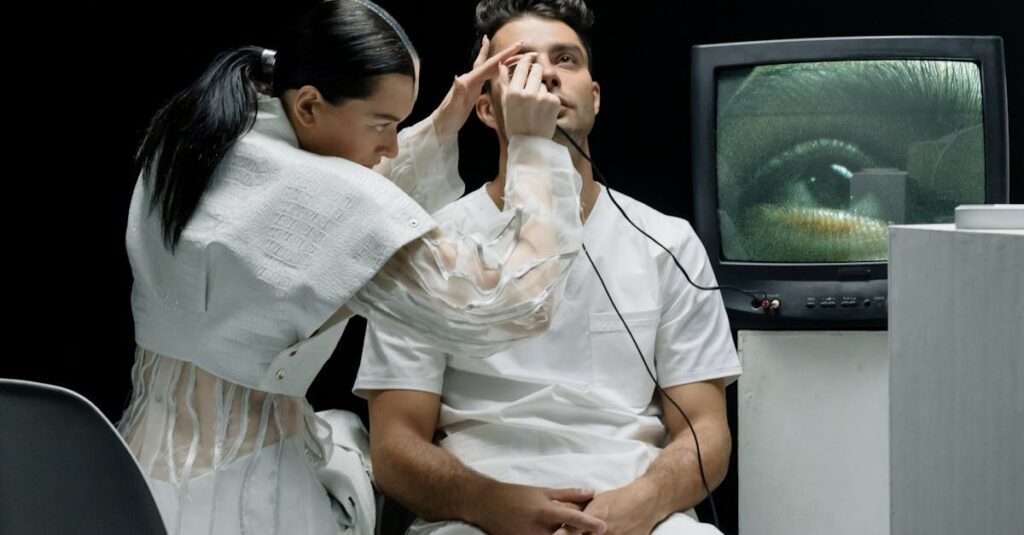Are your screens wrecking your vision health? As technology becomes a central part of daily life, many individuals are spending more time than ever before in front of various screens. From smartphones to computer monitors, the demand for visual engagement has never been higher. Yet, this increased screen time isn’t without consequences, especially for our eyes. The staggering rise of vision-related issues raises a significant question: How is your screen time affecting your vision?
Understanding the Problem
The Rise of Screen Time
In recent years, the amount of time spent on screens has skyrocketed. Studies show that the average adult spends more than 11 hours a day interacting with screens, whether for work, leisure, or communication. This exponential growth in screen usage has given rise to various health concerns, particularly regarding digital eye strain and other vision-related issues, prompting a reevaluation of our daily habits.
Common Vision Problems Associated with Screen Use
With the increase in screen time, several vision problems have emerged. Digital eye strain, often characterized by symptoms such as dry eyes, blurred vision, headaches, and difficulty focusing, is among the most common issues. Research indicates that up to 90% of people who work on computers for prolonged periods experience some form of eye discomfort. Other conditions include exacerbated conditions like nearsightedness, difficulty adjusting to different distances, and even long-term vision deterioration.
Causes of Screen-Related Vision Issues
Digital Eye Strain
Digital eye strain, or computer vision syndrome, results from the prolonged use of digital devices. Symptoms arise due to various factors, including reduced blinking when staring at screens, improper lighting, and poor ergonomic setups. The muscles responsible for focusing can become fatigued from constant adjustment to on-screen images, leading to discomfort and visual impairment.
Blue Light Exposure
Another significant contributor to potential vision health issues is blue light exposure. Screens emit high-energy visible blue light, which can contribute to digital eye strain, disrupt sleep patterns, and may even harm retinal cells in the long term. As such, addressing blue light exposure has become a critical part of maintaining optimal vision health in our increasingly digital lives.
Solutions to Improve Vision Health
Regular Eye Examinations
One of the most effective ways to safeguard your vision health is through regular eye examinations. Comprehensive eye check-ups at least once a year can help catch early signs of eye strain or other potential issues. An eye care professional can also recommend appropriate corrective measures, such as glasses or contact lenses tailored to screen use.
Implementing the 20-20-20 Rule
A practical solution to combat digital eye strain is the 20-20-20 rule. This simple guideline suggests that for every 20 minutes spent in front of a screen, individuals should take a 20-second break and look at something 20 feet away. This practice allows the eye muscles to relax, reducing fatigue and discomfort significantly.
Blue Light Blocking Glasses
Using blue light blocking glasses can also help mitigate the adverse effects of long-term screen exposure. These special lenses are designed to filter out the blue light emitted by screens, reducing glare and potential strain. While research on their effectiveness is ongoing, many users report an improvement in comfort and decrease in symptoms related to digital eye strain when using such glasses.
Tips for Reducing Screen Time
Setting Limits on Device Use
In an era where screens dominate every aspect of our lives, setting limits on device use is essential. Consider establishing specific times of the day to disconnect from screens, whether through the adoption of ‘screen-free Sundays’ or designated hours in the evening. Establishing these boundaries can help preserve your eye health and promote a healthier balance in your daily routine.
Alternative Activities
Engaging in alternative activities can significantly reduce reliance on screens for entertainment or productivity. Consider picking up a book, enjoying outdoor activities, or participating in hobbies that don’t require screen use, such as painting, cooking, or sports. These activities not only provide a break for your eyes but also encourage overall well-being and creativity.
Final Thoughts
As screens continue to dominate our personal and professional lives, it is critical to remain vigilant about our vision health. By understanding the impact of improper screen use and actively implementing strategies to mitigate risks, individuals can preserve their visual acuity and overall well-being. Taking proactive steps, such as scheduling regular eye exams, practicing the 20-20-20 rule, and reducing screen time, can lead to significant improvements in eye comfort and health. Prioritize your vision by being mindful of your screen habits and adopting healthier practices today.

